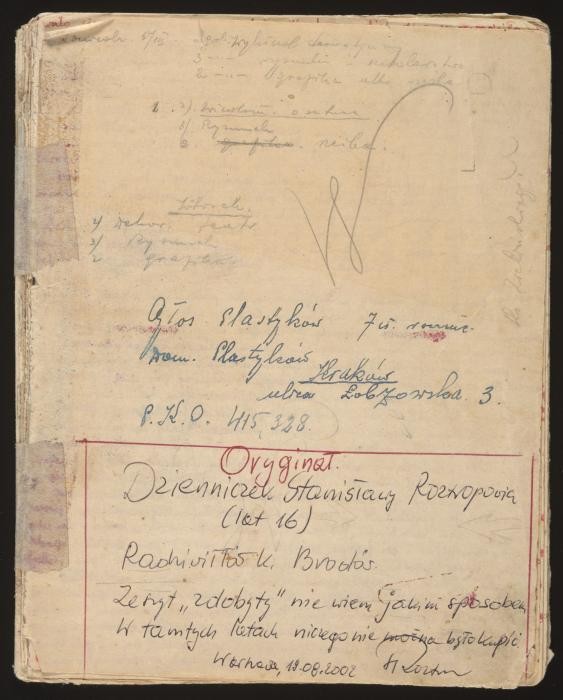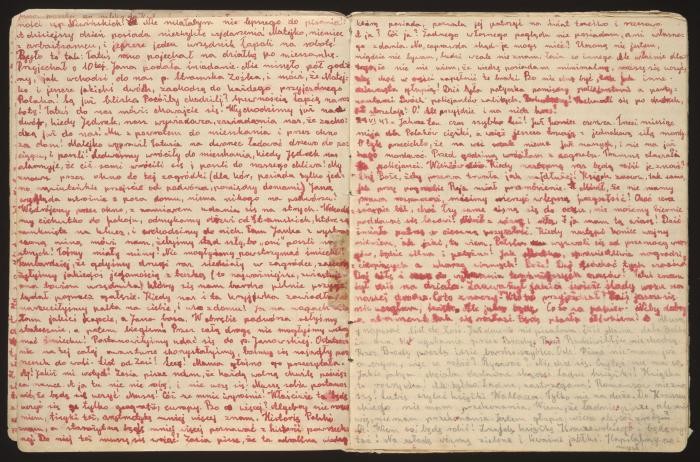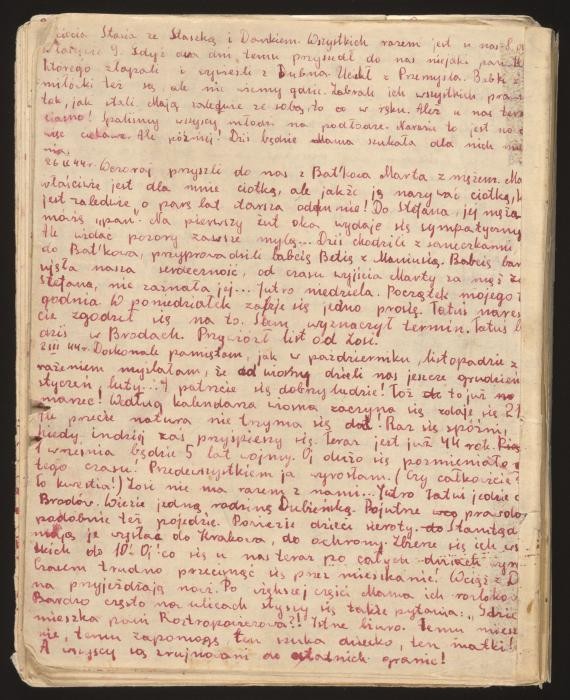Diaries reveal some of the most intimate, heart-wrenching accounts of the Holocaust. They record in real time the feelings of loss, fear, and, sometimes, hope of those facing extraordinary peril. Stanislava Roztropowicz kept a diary from 1943-1944. In it, she describes her family's experiences, their decision to hide an abandoned Jewish girl, and updates on Stanislava's sister who had been conscripted for forced labor in Germany.

Stanislava Roztropowicz kept a diary from 1943-1944. In it, she describes her family's decision to hide an abandoned Jewish girl, Sabina Heller (Kagan).
Sabina Kagan was an infant when SS mobile killing squads began rounding up Jews in her Polish village of Radziwillow in 1942. Her parents persuaded a local policeman to hide the family. The policeman, however, soon asked the Kagans to leave but agreed to hide baby Sabina. Her parents were captured and killed. Sabina was concealed in a dark basement, with minimal food and clothing. She was discovered and taken in by the Roztropowicz family in 1943.
This is the front cover of the diary kept by Stanislava, one of Sabina's rescuers. Stanislava recorded events of the war, updates on the eldest Roztropowicz child who was in forced labor, and the progress of Sabina, whom the family decided to call "Inka."
Item View
Stanislava Roztropowicz kept a diary from 1943-1944. In it, she describes her family's decision to hide an abandoned Jewish girl, Sabina Heller (Kagan).
Sabina Kagan was an infant when SS mobile killing squads began rounding up Jews in her Polish village of Radziwillow in 1942. Her parents persuaded a local policeman to hide the family. The policeman, however, soon asked the Kagans to leave but agreed to hide baby Sabina. Her parents were captured and killed. Sabina was concealed in a dark basement, with minimal food and clothing. She was discovered and taken in by the Roztropowicz family in 1943.
This image shows pages from the diary kept by Stanislava, one of Sabina's rescuers. Stanislava recorded events of the war, updates on the eldest Roztropowicz child who was in forced labor, and the progress of Sabina, whom the family decided to call "Inka."
Item View
Stanislava Roztropowicz kept a diary from 1943-1944. In it, she describes her family's decision to hide an abandoned Jewish girl, Sabina Heller (Kagan).
Sabina Kagan was an infant when SS mobile killing squads began rounding up Jews in her Polish village of Radziwillow in 1942. Her parents persuaded a local policeman to hide the family. The policeman, however, soon asked the Kagans to leave but agreed to hide baby Sabina. Her parents were captured and killed. Sabina was concealed in a dark basement, with minimal food and clothing. She was discovered and taken in by the Roztropowicz family in 1943.
This image shows an entry written on the back cover of the diary kept by Stanislava, one of Sabina's rescuers. Stanislava recorded events of the war, updates on the eldest Roztropowicz child who was in forced labor, and the progress of Sabina, whom the family decided to call "Inka."
Item View
We would like to thank Crown Family Philanthropies, Abe and Ida Cooper Foundation, the Claims Conference, EVZ, and BMF for supporting the ongoing work to create content and resources for the Holocaust Encyclopedia. View the list of donor acknowledgement.